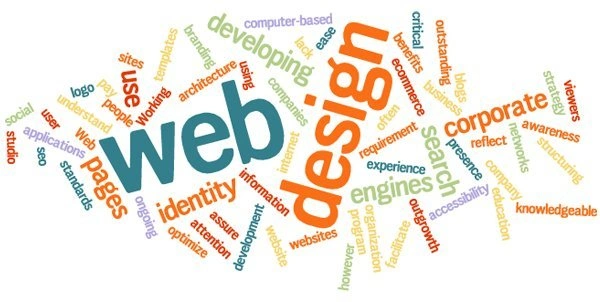The Significance of User Experience in Reliable Web Design Approaches
User experience (UX) works as a keystone in efficient web design approaches. It shapes exactly how users interact with a website, affecting their complete satisfaction and possibility of returning. A well-designed UX can boost engagement through user-friendly navigating and responsive designs. Neglecting these aspects might lead to stress and raised bounce rates. Comprehending the intricacies of UX is essential for designers aiming to create engaging digital experiences that resonate with varied audiences. What elements really drive effective user engagement?
Recognizing User Experience and Its Influence On Design
User experience (UX) is usually viewed as a plain aspect of web style, it fundamentally shapes how individuals interact with an internet site. UX includes all facets of the user's interaction, consisting of functionality, access, and overall fulfillment. A favorable UX fosters engagement, motivating customers to explore the website and return in the future. On the other hand, an unfavorable experience can result in irritation, causing high bounce rates and lost chances for conversion.
Layout elements like navigation, web content, and layout company play vital duties in forming this experience. Reliable UX style prepares for user needs and choices, making sure that information is visually enticing and easily available. In addition, recognizing user actions with analytics can give beneficial insights, educating layout choices that improve use. Inevitably, a complete understanding of UX permits developers to develop internet sites that not only attract users however likewise advertise meaningful interactions that straighten with business objectives and user expectations.
Secret Concepts of Efficient User Experience
Reliable user experience hinges on several essential principles that improve site performance and interaction. Instinctive navigating design, receptive format fundamentals, and the relevance of aesthetic hierarchy are vital aspects that add to a seamless interaction between individuals and internet content. Comprehending these principles allows designers to produce more easy to use and accessible digital environments.
User-friendly Navigation Design
User-friendly navigation design serves as a crucial gateway to their overall experience when users experience an internet site. Efficient navigation enables customers to effortlessly find the details they look for, improving their communication with the website. Key principles include clear labeling, sensible organization, and consistent placement of navigating elements. Tags need to be simple, enabling individuals to forecast the content they will discover. A well-structured hierarchy helps users comprehend the connection in between different areas, leading them via the site perfectly. In addition, responsive menus and quickly accessible links add to a liquid experience throughout gadgets. By prioritizing intuitive navigating, developers can substantially lower user aggravation and rise interaction, ultimately fostering a positive understanding of the site and its web content.
Responsive Design Fundamentals
A well-structured navigation system normally causes the requirement for a receptive layout, which is necessary in today's varied digital landscape. A receptive format assurances that websites function perfectly across various tools, consisting of tablets, desktop computers, and smartphones. This adaptability boosts user experience by allowing web content to be conveniently accessible and aesthetically systematic, no matter screen dimension. Secret principles of receptive layout include liquid grids, versatile photos, and media queries, which promote suitable watching. Furthermore, focusing on touch-friendly components improves interaction on smart phones. By implementing a responsive format, designers can fit customers' requirements, minimize bounce prices, and rise interaction. Inevitably, a well-executed responsive style fosters a favorable user experience, urging site visitors to check out the site further.
Visual Hierarchy Significance
Aesthetic pecking order plays a necessary function in assisting customers with a web site, making certain that essential info records their attention initially. By tactically using dimension, contrast, spacing, and shade, designers can develop a clear path for users to comply with. Bigger aspects commonly draw the eye, suggesting their relevance, while contrasting colors can highlight phone call to activity. In addition, consistent alignment and grouping of related material boost understanding, making navigation user-friendly. Effective use visual power structure not just improves functionality however additionally sustains the general visual of the website, cultivating a favorable user experience. When users can conveniently determine one of the most critical information, they are more probable to involve with the content, resulting in raised satisfaction and communication with the website.
The Function of Usability in Web Design
Usability plays a vital function in web design, especially with navigating simplicity and adherence to accessibility criteria. Reliable navigating improves user fulfillment by allowing visitors to find details rapidly and intuitively. Conference ease of access standards ensures that all customers, regardless of their abilities, can successfully engage with the web site.
Navigation Simpleness
Simpleness in navigating stands as a keystone of efficient web design, significantly influencing user experience. A streamlined navigating system permits individuals to locate information swiftly and without effort, minimizing stress and boosting satisfaction. Clear labeling and logical structure are important elements, assisting customers effortlessly with the internet site. Repetitive web links or excessively complicated food selections can confuse individuals, leading to raised bounce prices. Additionally, mobile responsiveness has to be considered, making sure navigation stays straightforward across devices. Minimizing and prioritizing essential pages clutter further supports user engagement. Efficient navigation not only cultivates a favorable experience yet likewise urges individuals to discover the site better, inevitably causing greater conversion prices. Hereof, navigation simpleness acts as a critical consider the total performance of web design methods.
Availability Criteria
User involvement is substantially improved when sites adhere to availability requirements, ensuring that all individuals, no matter their capabilities, can browse and communicate properly. Conformity with these requirements not only expands the audience but likewise enhances general user contentment. Obtainable style integrates functions such as text choices for photos, key-board navigating, and adequate shade comparison, which help with use by people with impairments. On top of that, implementing these standards can favorably influence search engine optimization (SEARCH ENGINE OPTIMIZATION) by improving site framework and quality. As web design advances, prioritizing ease of access ends Continue up being important in fostering an inclusive digital atmosphere. By welcoming these criteria, developers add to an extra fair net, ultimately driving user loyalty and engagement.
Significance of Responsive Style for User Engagement
As consumers progressively access web sites via a variety of devices, the significance of responsive layout comes to be critical for engaging customers effectively. Responsive style assurances that an internet site adjusts effortlessly to different screen dimensions, offering an ideal viewing experience no matter of the tool made use of. This adaptability boosts user interaction by helping with less complicated navigation and communication with content.
When individuals encounter an internet site that is receptive, they are more probable to remain longer, discover even more, and return in the future. A properly designed receptive layout decreases the aggravation typically connected with zooming and scrolling on smaller displays, thereby decreasing bounce prices. Furthermore, responsive design can favorably impact internet search engine rankings, as search engines prioritize mobile-friendly websites. In today's electronic landscape, where mobile use continues to rise, executing responsive style is not just advantageous, however crucial for keeping user involvement and ensuring a favorable experience throughout all gadgets.
Enhancing Load Times for Better User Complete Satisfaction

To boost lots times, internet designers should prioritize optimizing photos, leveraging internet browser caching, and lessening HTTP requests. Furthermore, using Material Distribution Networks (CDNs) can expedite material delivery by dispersing it throughout numerous geographic locations. Improving code, such as compressing CSS and JavaScript files, additionally adds to much faster packing speeds.
Ultimately, a commitment to improving load times not only improves user contentment however additionally reinforces brand loyalty and boosts the likelihood of repeat visits. A swift, smooth experience is essential for maintaining individuals and promoting positive interactions.
The Impact of Visual Hierarchy on User Interaction
Aesthetic pecking order works as a crucial aspect in leading user interaction on an internet site. By organizing content in such a way that focuses on information aesthetically, developers can affect exactly how individuals involve and navigate with a website. This power structure is developed via numerous layout strategies, including dimension, contrast, spacing, and color. Bigger font styles or strong colors attract focus to critical components, such as telephone calls to activity or headings, while suppressed colors and smaller sized fonts can show subservient info.
Efficient aesthetic power structure assists individuals quickly recognize what is crucial, minimizing cognitive tons and enhancing use. It permits instinctive navigation, making it less complicated for individuals to find what they require without disappointment. As customers communicate with a website, a well-structured visual pecking order fosters a much more rewarding experience, inevitably resulting in greater interaction and conversion prices. Designers need to prioritize these principles to create a reliable and user-centered web atmosphere.
Measuring User Experience: Techniques and devices

Regularly Asked Inquiries
How Can I Improve My Web site's User Experience on a Budget?
To boost an internet site's user experience on a spending plan, one can enhance web page lots speed, simplify navigation, execute responsive design, improve content clarity, and collect user responses for continuous improvements, guaranteeing a rewarding visitor experience.
What Are Typical User Experience Errors to Stay Clear Of in Web Design?
Common user experience blunders in web design consist of cluttered formats, inadequate navigating, slow-moving packing times, lack of mobile responsiveness, ignoring access, irregular branding, and failing to focus on user comments - Web Design services. Each can considerably prevent total site efficiency
How Commonly Should I Update My Site for Better User Experience?
Internet sites need to be updated frequently, preferably every few months, to preserve suitable user experience. Regular updates assist address usability issues, revitalize content, and adapt to altering user requirements, ensuring the website stays pertinent and appealing.

Can User Experience Effect SEO Rankings on My Web site?
User additional info experience can substantially influence SEO rankings, as online search engine focus on web sites that use seamless navigation, quick loading times, and engaging web content. A favorable user experience can lead to lower bounce prices and greater search visibility.
What Duty Does Accessibility Play in User Experience Style?
Access plays a vital role in user experience style by making certain that all individuals, no matter capacities, can engage and browse with a website effectively. This inclusivity improves overall fulfillment and engagement among varied users.
User experience (UX) is frequently viewed as a plain element of internet layout, it essentially forms just how customers engage with an internet site. User interaction is considerably improved when websites adhere to access standards, ensuring that all individuals, no matter of their abilities, can browse and communicate successfully. Determining user experience (UX) is necessary for comprehending just how successfully a web site satisfies the requirements of its individuals. In addition, functionality testing, where actual individuals browse the website while onlookers note troubles, provides direct responses on user experience. Usual user experience errors in web design include messy designs, bad navigating, sluggish loading times, absence of mobile responsiveness, ignoring access, inconsistent branding, and failing to prioritize user responses.